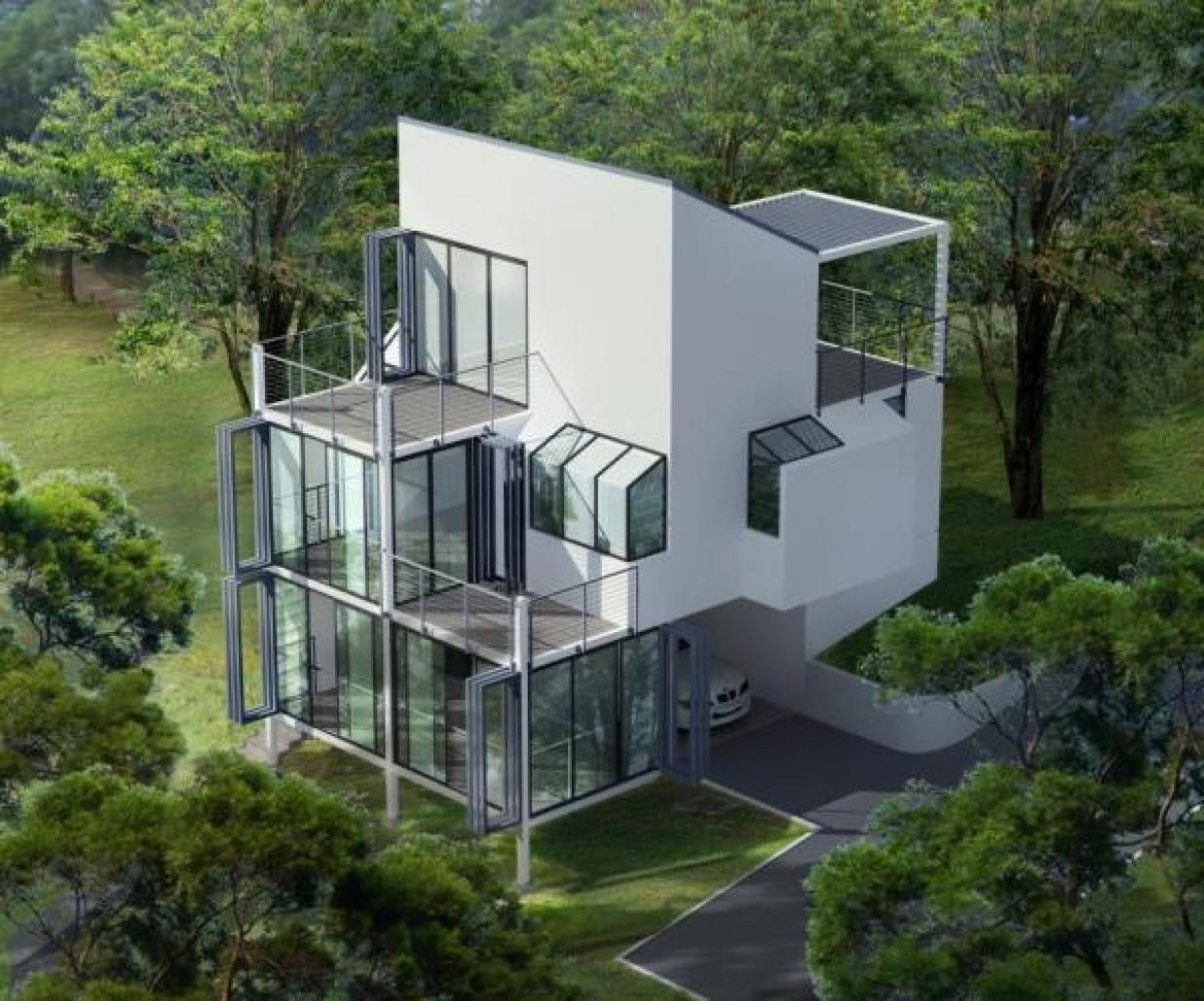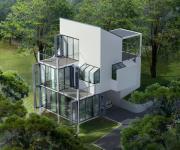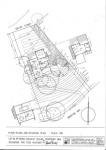Tess McVicker’s house.
Tess McVicker’s house was designed on Mackley Island in Morton Bay, an hours travel from the Brisbane CBD. It was designed to be built with UBS {Universal Building System} - a lego-like proprietary building system designed for maximum energy efficiency and design flexibility.
The windows towards the bay are un-shaded as they face south-east away from the sun in Australia. North facing sliding doors on the upper floors are both shaded.
The brief called for a two bedroom structure {one being a guest’s room}, with an open plan and with regard to views toward the bay and islands, as well as for a spacious advertising and graphics home office for a single person.
The site slopes initially moderately, then steeply down to the bay. There is magnificent tree-growth on the block and water views to the south and east to Stradbroke Island, Russell Island and Lamb Island.
By cutting a shelf into the land from where the land starts to slope steeply down, a level carport was to be provided, wedged between a glassed home office unit which is “suspended” above the steeper ground on posts, and alongside it uphill, by a retention-walled rainwater storage tank for 40 000 litres of water {enough for 9 months use for one person}. With the median rainfall on the Morton Bay Islands being between 1600 and 2400 mm/year, the annual yield from a 45 m² roof will be in the order of 72 to 90 000 litres.
The main structure was to be built on top of both the home office and the rain water tank spanning the carport.
“Smart-flow” gutters would have diverted most of the leaf litter over the edges, and a 100 litre in ground first-flow diverter would have directed dirt and bird deposits from the 45m² roof to the in-ground trickle irrigation system. When the first flow diverter fills, water starts to enter the rainwater tank through a membrane filter. A specially designed laser-light monitoring device trips a solenoid valve open and shut to allow 60 litres @ a time of back up town water to enter the tank when the water level in the tank hits a “preset” - lowest allowed level. A pump maintains adequate water pressure from the tank to the house.
The tank water was to be used directly for:
a. Solar hot water heater
b. Showers
c. W.C.
d. Hand basins
e. Kitchen sink
and via carbon filtration and UV-sterilization for drinking water to meet and supersede council requirements with regard to health risks from tank-water.
A biological effluent treatment system is projected to be buried into the hillside, the main tank forming the curve of the retention wall where the driveway turns into the carport. Treated water was to be distributed in ground throughout the upper slope as demanded by the local council. -------------------------
About the UBS System.
The "universal building system" or "UBS" is a steel based post and beam based modular frame system employing a construction module of 3.6 x 3.6m, using 75x75x3 mm SHS columns and 150x50x3 RHS beams for bearers and linters between the columns. Joists are 150x150x2 RHS @ 600mm. In addition the system provides standardized post extensions to carry a roof rafter, and standardized “outrigger” sections, which fix to lintel and bearer to increase the design with of the module by 600, 900 and 1200 mm.
Steel of course is impervious to termites. It is galvanized and due to the way it is “skinned” it is also insulated from temperature fluctuations and precipitation.
2400x600x75mm aerated concrete panels are screwed straight onto floor joists forming a floor. At 2785 or 3000 mm length {depending on the desired ceiling height} they screw straight onto bearers and lintels as an outer skin-external-wall with 2400 {or 2700} millimeter panels being glued to these on the inside to form a 150mm thick aerated concrete external wall in one and two storey structures in climates where this method is appropriate. This is then finished externally wit
2003
Favorited 1 times



.jpg)



